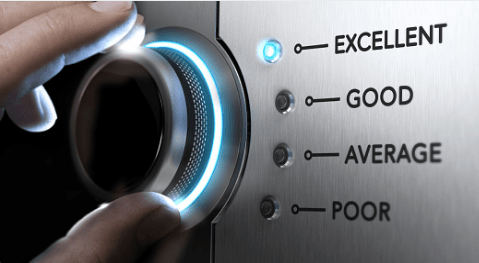Why Modern Enterprise is Failing Today’s Customer
Here’s Why You Need to Personalize Your Customer Experience.
Regardless of the business size or industry, most companies are organized and measured along three key business functions: marketing, sales, and customer service. Marketing’s role is to build interest and generate leads in a product or service. Once they’ve gotten the customer to express interest, the department thinks their job is done. Sales wants to take those leads and convert them into deals (and $$), and then they move on to the next one. Service doesn’t come into the picture until after someone becomes a customer, and that’s usually to deal with a sign-up, billing or product issue. In many companies, these three functions operate largely independent of one another.
Customers Want Your Loyalty
For the connected customer, the gaps between the three departments are more clearly the root of the disconnect between company and customer — and customer experience functions have emerged to close those gaps. Customers are fed up, and they don’t want to be just a faceless number to be marketed to or sold to. Today’s customer is looking for a higher level of transparency within organizations than ever, and they can’t tolerate a company that does not put a customer’s interests at the heart of what it does.
One of the most obvious areas that the modern enterprise fails customers is in customer loyalty. Businesses consistently reward new customers over their loyal and longtime customers. For example, think of the last time you went to purchase a new mobile phone. Your two-year contract is up, and you’re interested in the latest model. You’ve seen all of the commercials for the amazing deals on new contracts. But as a longtime customer, you discover that those amazing rates are only available to new customers — and you’re stuck with higher monthly payments. That’s the big “thank you for being a customer” you get for sticking with one provider. That’s where the big disconnect happens.
It’s All About Creating a Good Customer Experience.
Retailers like Parkson and Sephora have often lead the way in blurring the lines between sales, service, and marketing. When you step into these outlets there are certainly salespeople on every floor, but the ethos that these salespeople are trained with is “do everything you can for the customer.” When salespeople are operating with a service mindset, it shows clearly in the customer experience.
In the eyes of the customer, the days of sales, service, and marketing working in silos are no longer tolerable – but many businesses have been slow to change this. That’s where the Customer Success Platform comes in — putting the customer at the center of each interaction. Because a customer service agent who doesn’t have visibility into sales and marketing data is compromised in his ability to serve the customer — the service department is contained to dealing with a problem, meaning that the outcome can only be positive to a certain extent, rather than cultivating a complete customer experience.
The technology powering the best customer service department is about so much more than customer service software. High-performing service departments leverage insights informed by the entire business across departments. To put it simply, it’s impossible to deliver personalized service across any channel without that 360-degree view of the customer. For the companies who don’t have that visibility, the tendency to remain siloed in a departmental approach will continue to serve as a barrier between them and their customer.
Source: Salesforce
Lava is an authorised Salesforce Partner in Malaysia and has more than 9 years of cloud solutions, CRM implementation and consultation experience. We pride ourselves in not just being a CRM partner but in also understanding the needs of our customers and taking their business to the next level.

